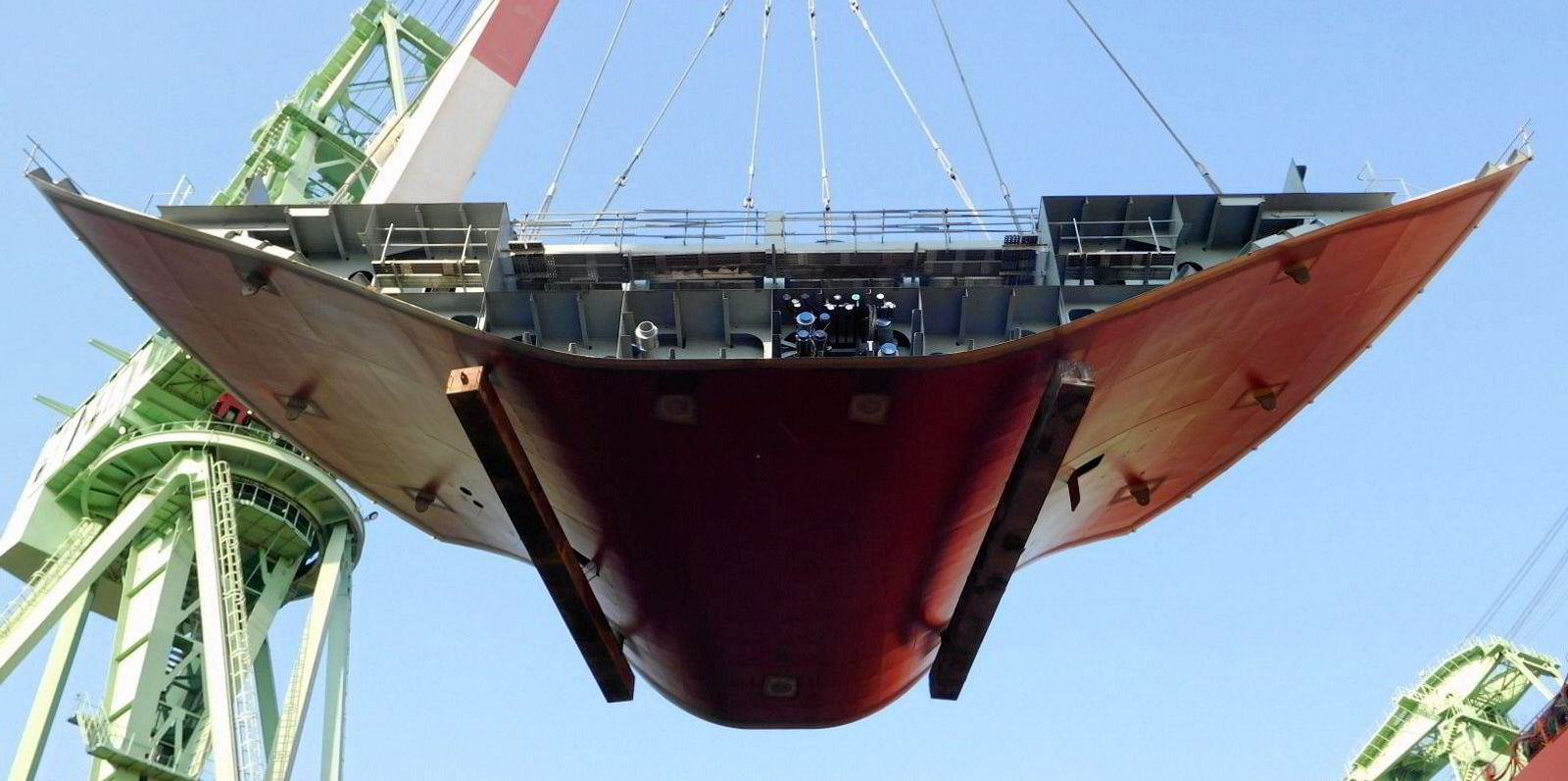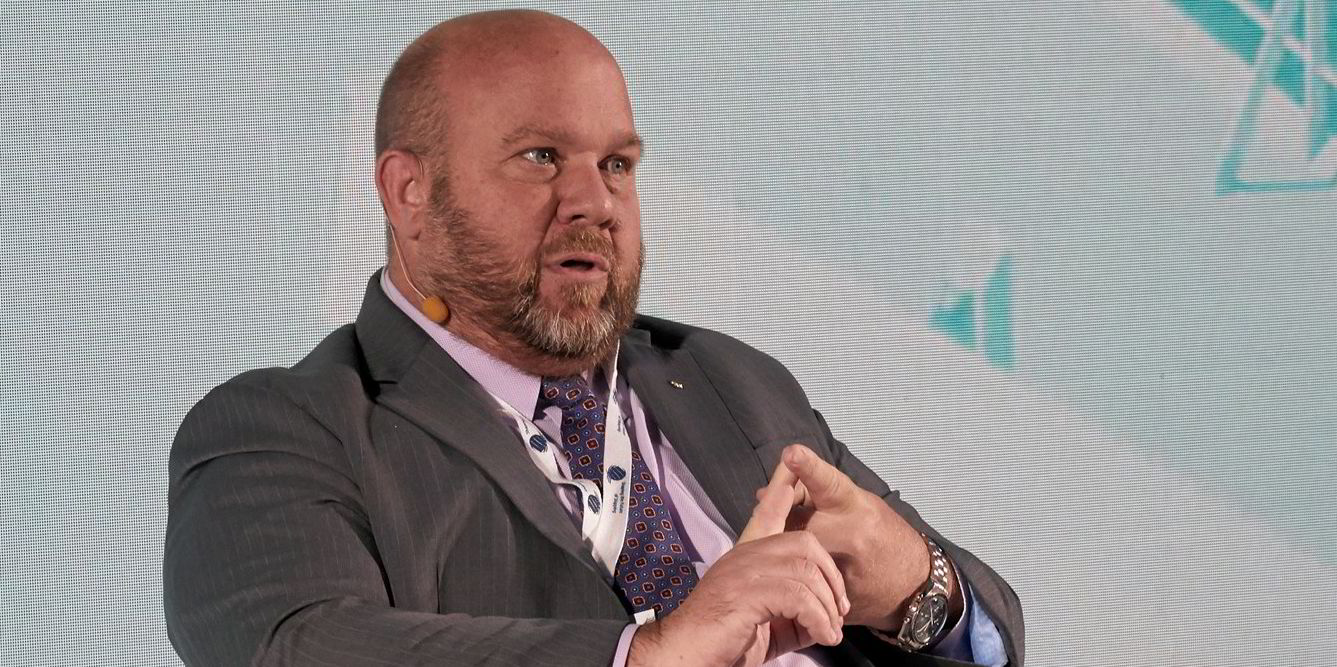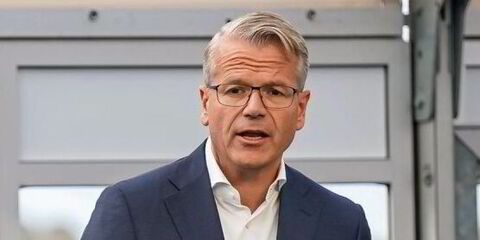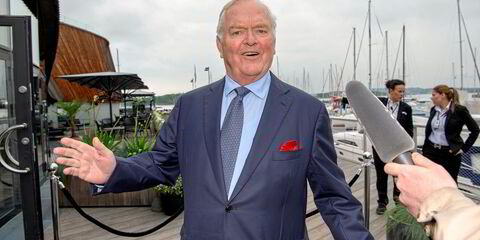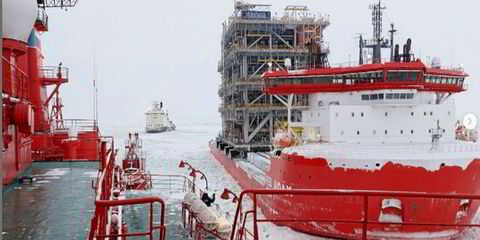Alexander Saverys is on a mission, to turn what had once been tanker owner Euronav into the new CMB.Tech — a diversified shipowner with 150 vessels and newbuildings to be powered by hydrogen and ammonia.
And while the Euronav chief executive is bullish about investing in ammonia fuelling for all of the New York and Brussels-listed company’s large oceangoing ships, engines remain under development and there are doubts about the future availability of the green version of the fuel.
In an interview with TradeWinds’ Green Seas podcast, Saverys acknowledged that he does not expect there to be enough green ammonia “molecules” to fill his ships. But that is not the point, because significant emissions reductions can be made by running dual-fuel ships on ammonia some of the time.
—————
When was the “aha” moment for you? When did you realise that ammonia is the way to go for long-haul shipping?
The first aha moment was on hydrogen. When 15 years ago, we started thinking about alternative fuels, we looked at LNG a lot. These were the days when the sulphur content in the North Sea and the Baltic Sea had to be limited, and we were faced with higher fuel costs. And back then, if you recall, LNG was really the alternative. So we looked at LNG a lot and concluded that for tramp shipping, it was too expensive, and it would be very difficult to find LNG. And then suddenly, the debate on the methane slip came about, and we realised from a greenhouse gas point of view, well to wake, maybe LNG is not the best solution; we need to look at something else.
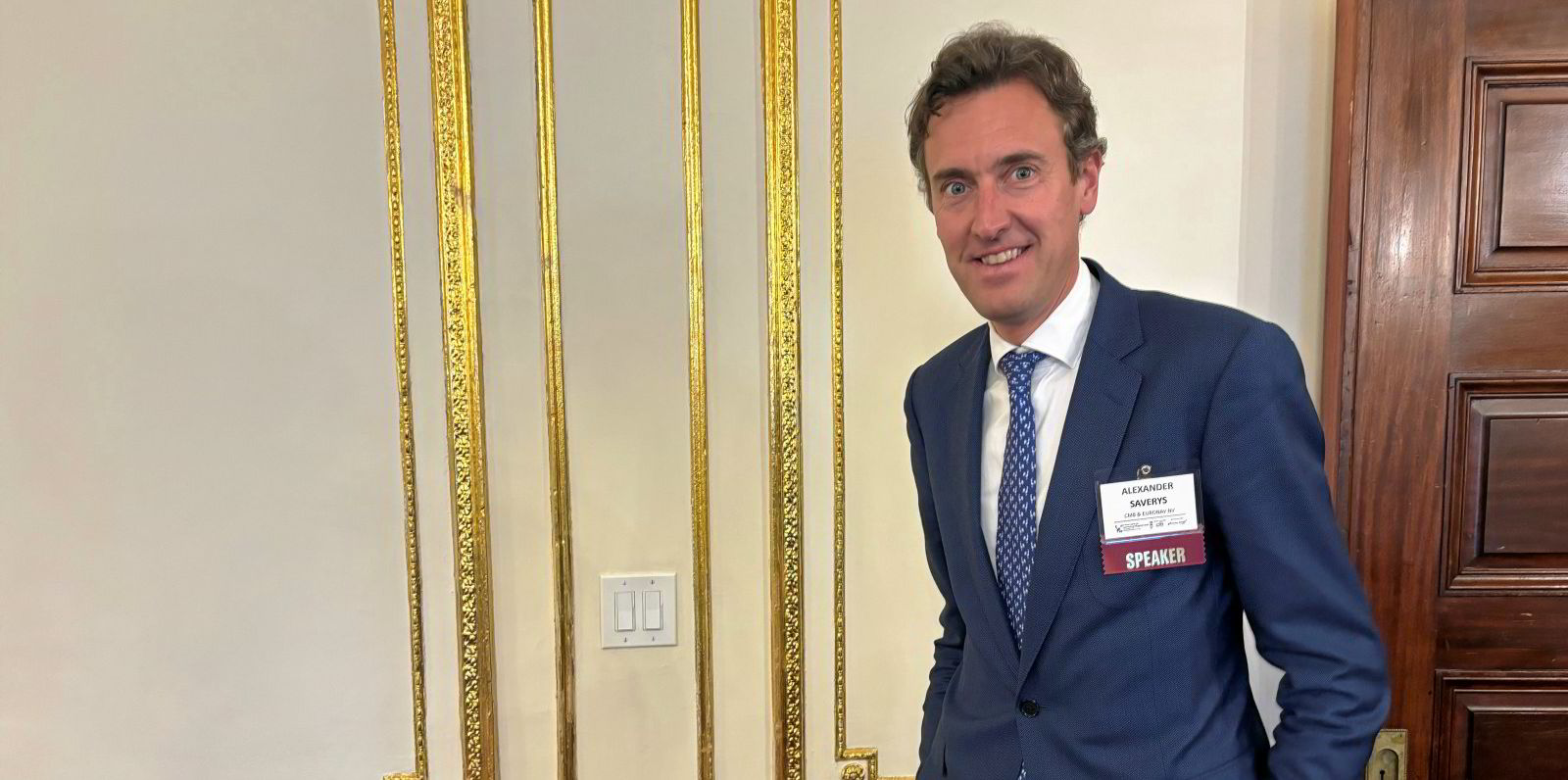
In 2016, we decided to build a small ship — a passenger ship on the river in Antwerp — and decided to test hydrogen on that ship. And when we saw it worked in a dual-fuel engine, so diesel-hydrogen, that was a big aha moment where we said, ‘Well, this molecule can be a solution for shipping.’
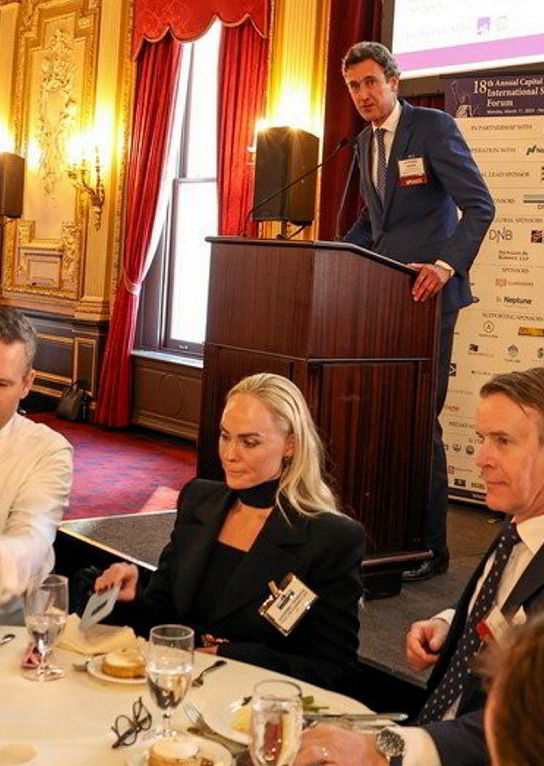
But then the next moment came when we realised that you need to compress the hydrogen and put it on board, so it takes a lot of space. And we realised that hydrogen works for small ships that can refuel frequently, every day or every two days, so what’s the fuel if you cannot do that, if you need to sail from Brazil to China or from Europe to Africa, and that’s when we started looking into ammonia because it’s a fantastic hydrogen carrier. You can carry ammonia, it takes less space and it’s carbon-free.
A lot of shipping companies have been going for something that exists, with many choosing to order vessels powered by methanol, which is also a hydrogen carrier. Why are you leapfrogging methanol?
Purely, it’s chemistry. Methanol is CH3OH. If you burn it, you emit CO2. It is clear that some methanol that will be produced could be called carbon-neutral because you will take CO2 from a landfill or you will take CO2 from a source that is truly green, but everything else — capturing CO2 from the atmosphere or taking CO2 from biomass — I don’t think that will be perceived as totally green, or it will be way too expensive. So that’s why we wanted to leapfrog the methanol.
Ammonia has not been used on a ship, and many say that even when the first engines are deployed it will be some time before fleets can be deployed to run on the fuel. What makes you think that you can go so big so fast?
Everybody who wants to deploy a fleet of alternative fuel vessels, whether it’s LNG, methanol or ammonia, has the same issue. There is no bunkering infrastructure, no molecules available, and the engines need to be developed. I would say that on the engines, we’re getting there. So the big engine manufacturers will have the ammonia engines ready in the next couple of years. On sourcing the molecules, we’re not there yet, so a lot of work has to be done. And on the bunkering infrastructure, it’s the same.
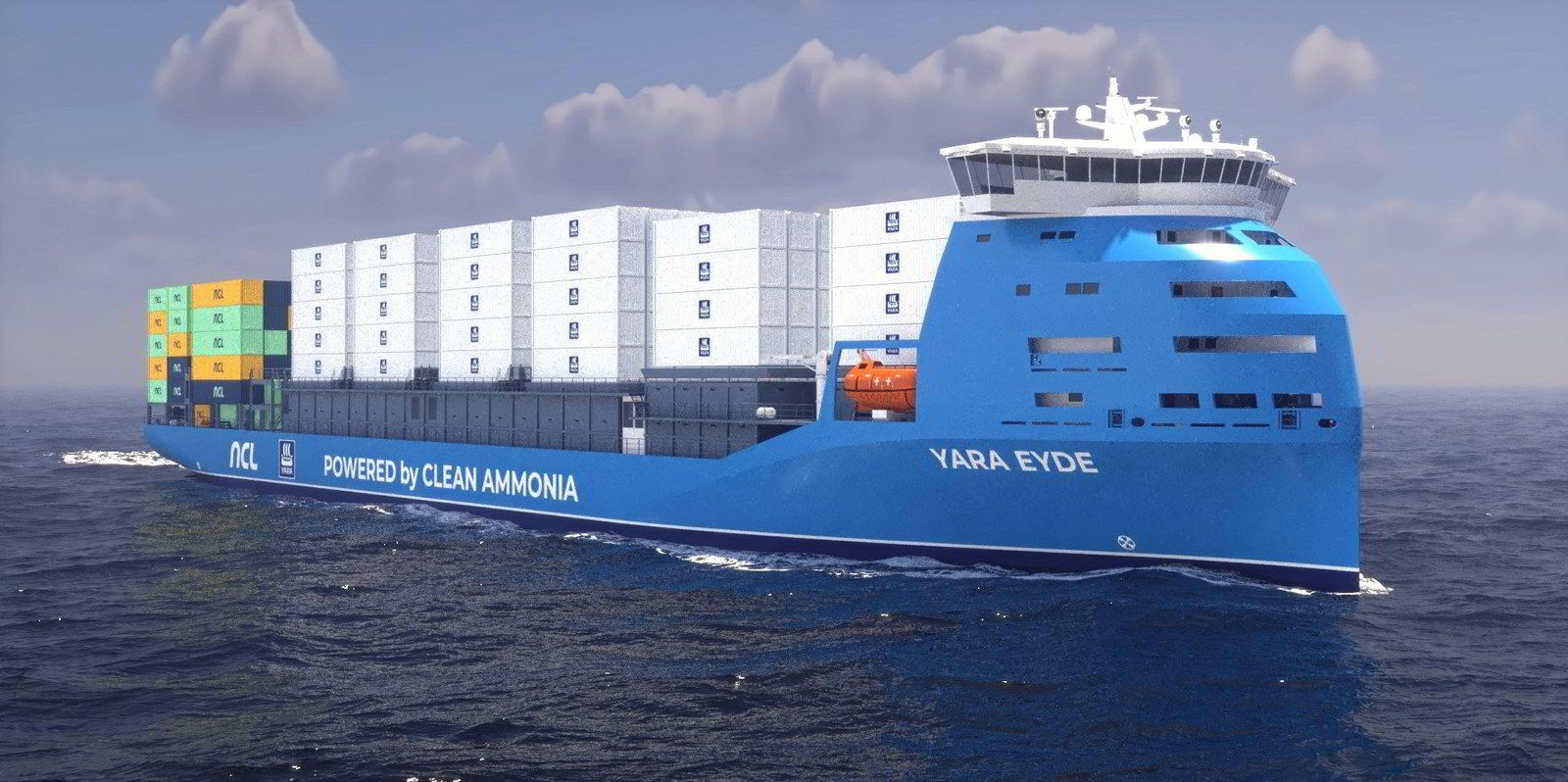
But that doesn’t mean you shouldn’t do anything. There are places in the world with customers where you could already start a certain trade even before the fuel and the bunkering infrastructure is available worldwide. And that’s why we believe in it, and that’s why we’ve invested so much in ammonia-fuelled ships. Because we believe there are certain trade lanes with certain customers where we can already get started.
Explain what you mean.
- Compagnie Maritime Belge (CMB) is a private company based in Belgium and owned by the Saverys family and led by chief executive Alexander Saverys.
- Euronav is a US and Belgium-listed shipowner that was focused on tankers until CMB became its largest shareholder and now majority owner, and Alexander Saverys took the helm. CMB owns 88% after it was required to carry out a tender offer to buy up the shares in Euronav that it did not own.
- CMB.Tech owns and operates a variety of vessels and industrial applications with a focus on hydrogen and ammonia fuelling. On 8 February, Euronav completed a $1.15bn deal to buy CMB.Tech, along with bulker owner Bocimar, container ship owner Delphis, chemical tanker owner Bochem and other shipping units from CMB.
- The new CMB.Tech: The plan is to rebrand Euronav as CMB.Tech, and the Euronav name will be used for its tanker subsidiary.
Just a very concrete example: we have done a deal with a company in Norway called North Sea Container Line. Together with Yara [International], we’re going to deploy a ship between Germany and Norway powered by ammonia. It is going to carry containers that are going to be filled with Yara cargo. So Yara will give us the molecule, North Sea Container Line will operate the ship, and we will own the vessel. That’s a good example, and we have more of them as well. So it’s on a dedicated trade lane, where we will basically solve the catch-22 by providing the fuel and having the vessel trade on that specific trade lane.
CMB.Tech, which Euronav purchased from the Saverys family’s Compagnie Maritime Belge, has a position in producing fuels. What have you learned from that about the future when it comes to ammonia?
We learned a lot about the production of fuels. The only thing you see nowadays is PowerPoint presentations and a lot of discussions and talk. It’s by doing it that we learned some good things, but also some bad things. If you want to hear some bad things about producing green molecules, the technology really still needs to be developed tremendously on the electrolysers [which use electricity to produce hydrogen from water]. For instance, people promise technology which today is not yet available at a sufficiently large scale. But the good news is, it does work. You can produce green fuels, with seawater, renewable electricity and electrolysers. So there’s a clear pathway to producing these clean fuels at a large scale, and our strategy is basically centred around two things. On the one hand, we’ll produce it ourselves. And on the other hand, we’ll work together with other people that produce them and give them offtake agreements.
Can you produce enough to cover all those ships you are building?
No. Our initial project in Namibia is for 200,000 tonnes [per year] of ammonia. If all our vessels deliver by 2026-2027, we’ll probably need twice that amount. But that is if we want to burn 100% ammonia. The energy transition in shipping will go through a phase where you do not burn 100% clean fuels from day one. You will do 5%, 10%, 15%, 20% and then gradually build it up. So that in a way, in 2026-2027, we’ll have sufficient molecules for our fleet.
Explain how that would work.
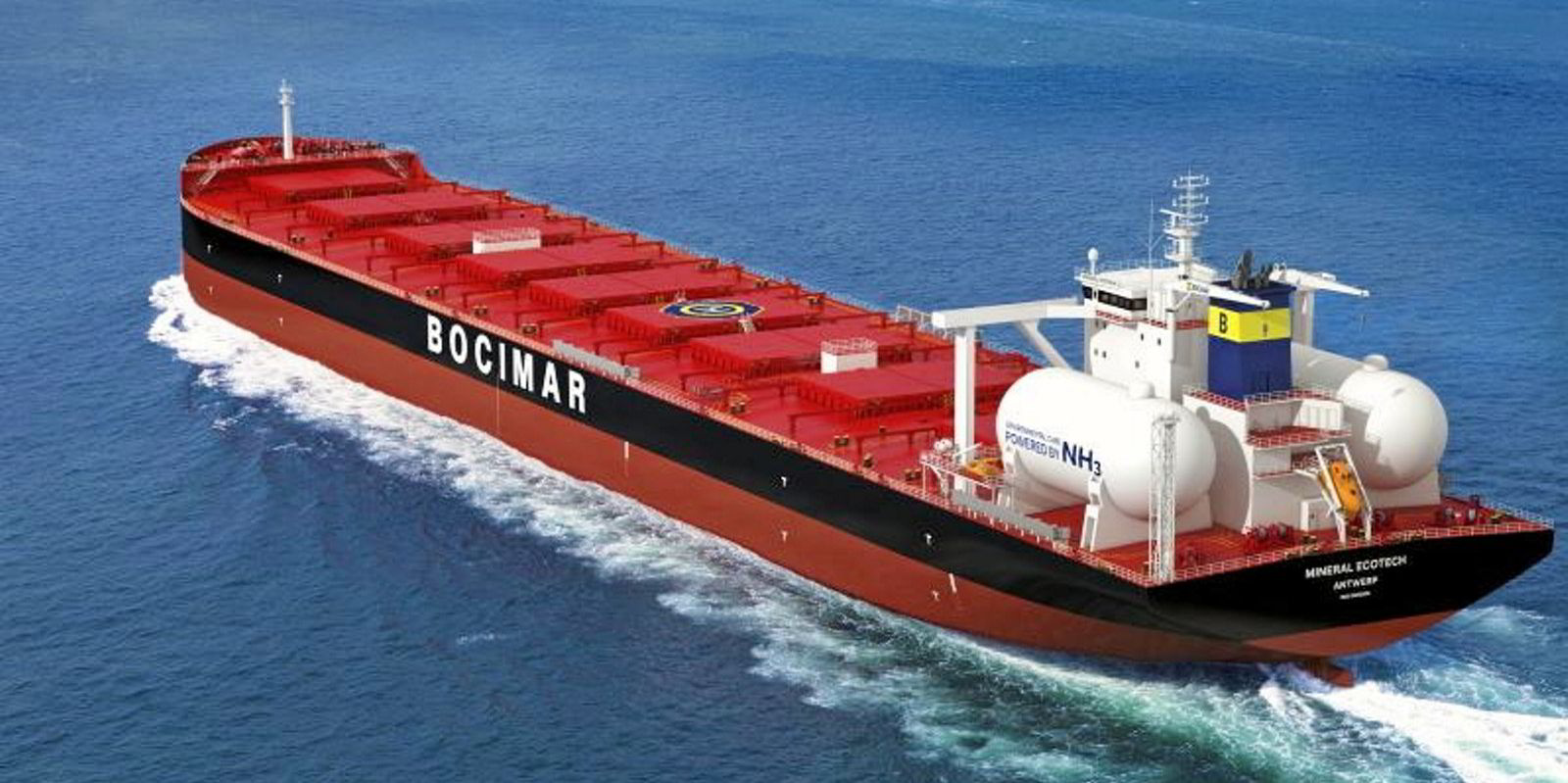
Basically you take a view over a year that I want to sail on ammonia 20% of the time and reduce my CO2 footprint 20%, which will already bring you in certain jurisdictions like the European Union, a very long way into the decarbonisation targets that have been imposed by the regulator. Some other people might choose to go all the way from day one, and others might even choose to wait for five years and burn diesel in the meantime, but at least to have a future-proof ship.
You mentioned ammonia as the fuel for shipping decades out. What share of shipping’s fuel can ammonia become for long-haul shipping?
I think definitely 50%. As you know, batteries don’t work. Wind assist only goes that far. Nuclear is a fantastic solution, but unfortunately, it will take years and decades before the regulations allow nuclear reactors on board our ships. Methanol is not a long-term solution just because of the molecule and the vast amount you would need, which would have to come from biomass, and I don’t think politicians will allow that. So ammonia is the only short-term — and when I say short-term, it’s two or three decades out — solution to clean shipping.
For your hydrogen fleet, what does the fuel supply scenario look like to supply those vessels?
I think both hydrogen and ammonia will go through a phase for the next five years of small quantities of green molecules that will be available, which we’re obviously going to try to catch, but larger quantities of blue molecules, where carbon capture will come into play. If we want to use hydrogen and ammonia on board ships, we will need to use ammonia and hydrogen which are blue — so with carbon capture and based on natural gas. Going forward from 2030, I think you will see more and more supply of true green molecules and regulations are to become stricter as well.
People talk a lot about the EU ETS [Emissions Trading System], but the real game changer is the FuelEU Maritime directive. It’s a bit technical, but in essence, it means that the greenhouse gas content of your fuel on board your ship is going to be limited; it will have to go down gradually. There, the penalties will become very, very expensive from 2030, which will give another incentive to have all these molecules becoming available.
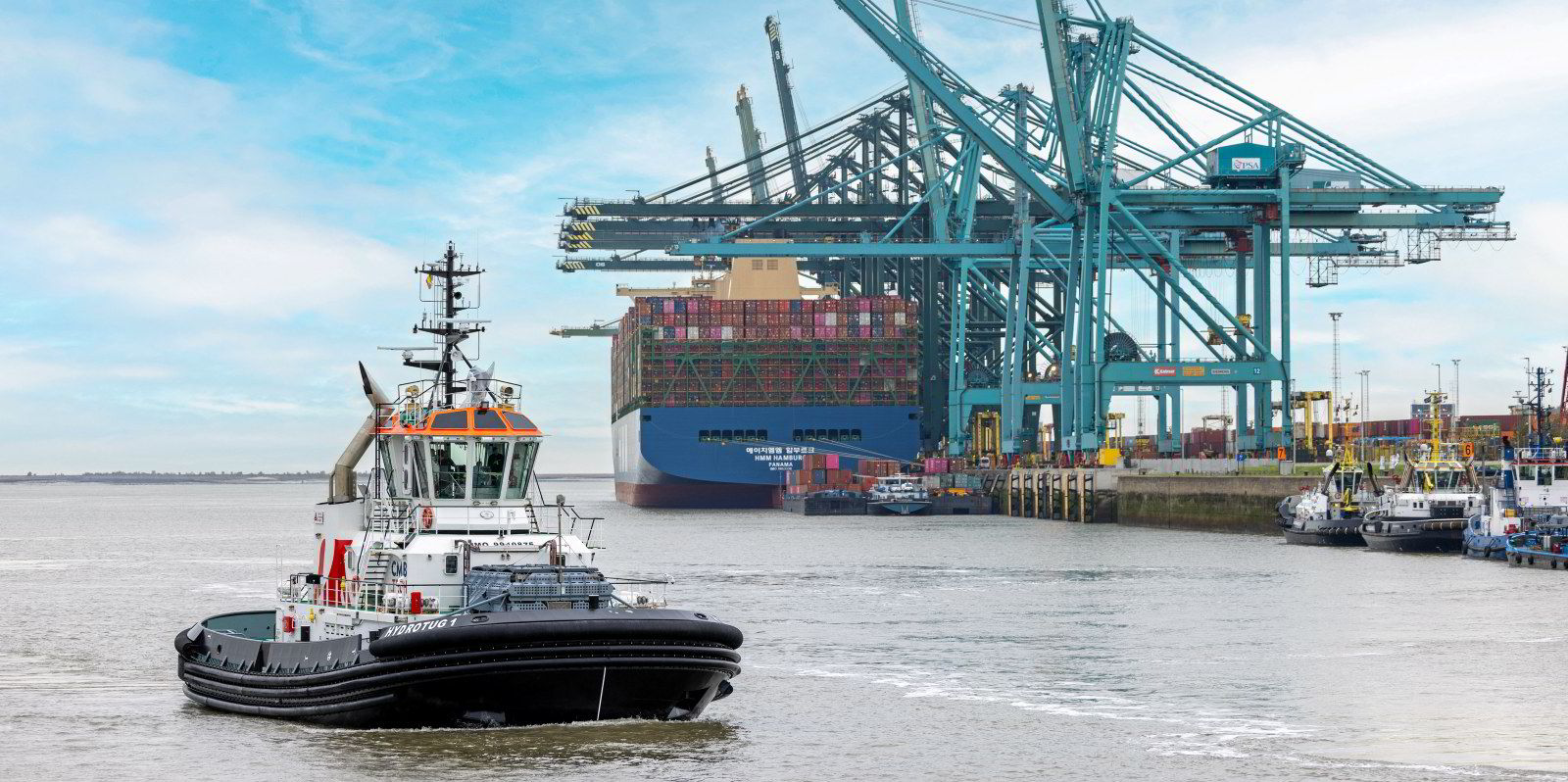
What about the International Maritime Organization? As you look at the deliberations that are going on now, what impact might it have?
On the IMO, the glass is half full. We’re all very frustrated that things are not going fast enough. But at least people are talking about it, and everybody knows something needs to happen. I’m not expecting IMO regulations to go very quickly, because it’s always a compromise of a compromise of a compromise, which is logical with all these countries represented, but I do believe that the direction it is taking should give a clear signal to shipping that this is something which will not go away and the decarbonisation targets are becoming more stringent and will become more stringent.
This interview has been edited for clarity and brevity.
